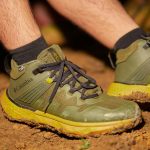You might think Gore-Tex is the ultimate waterproof fabric, but it’s not without flaws. While it offers reliable protection and breathability, its performance can fall short during intense activity, and the stiff fabric isn’t always comfortable. Gore-Tex gear is pricey, and its durability depends heavily on proper care. Plus, environmental concerns around manufacturing and disposal are growing. If you’re after the full story on its strengths, weaknesses, and alternatives, there’s more to uncover.
Table of Contents
Key Takeaways
- Gore-Tex offers reliable waterproofing and breathability but may underperform in intense activities compared to some rivals like eVent.
- The fabric’s stiffness and reduced flexibility can limit comfort and packability for some users.
- Gore-Tex products are often priced higher, which may not always match their performance benefits.
- Proper maintenance is crucial to retaining Gore-Tex’s waterproof and breathable qualities over time.
- Environmental concerns about Gore-Tex’s production and disposal challenge its long-term sustainability.
The History and Evolution of Gore-Tex
Although many know Gore-Tex as a staple in outdoor gear, you mightn’t realize how it started. Back in the late 1960s, Bob Gore, a chemical engineer, accidentally discovered a way to stretch polytetrafluoroethylene (PTFE) into a microporous membrane.
This breakthrough led to the creation of a fabric that promised waterproof protection while letting moisture escape. Over the decades, Gore-Tex evolved from a niche innovation to a widely trusted material in jackets, shoes, and gloves.
You’ll find it in everything from hiking gear to everyday wear. Its history reflects continuous improvements in durability and comfort, aiming to keep users dry and comfortable in various conditions.
Understanding this evolution helps you see why Gore-Tex became so popular—and why some question if it still lives up to its reputation.
How Gore-Tex Technology Works
Gore-Tex technology relies on a unique membrane made from expanded polytetrafluoroethylene (ePTFE) that contains billions of microscopic pores.
These pores are about 20,000 times smaller than a water droplet but 700 times larger than a water vapor molecule. This size difference allows the membrane to block liquid water from passing through while letting sweat vapor escape.
When you wear Gore-Tex gear, the membrane acts as a barrier against rain and snow but still breathes, preventing you from feeling clammy. The membrane is typically bonded between fabric layers to protect it and add durability.
Key Benefits of Gore-Tex Materials
Waterproofing and breathability stand out as the primary benefits you’ll get from materials using this advanced membrane technology.
When you wear Gore-Tex gear, you stay dry even in heavy rain because the membrane blocks water from entering while allowing sweat vapor to escape. This keeps you comfortable during intense activities.
Gore-Tex is also windproof, so it shields you from chilling gusts, enhancing warmth without adding bulk.
Durability is another plus—these materials hold up well under rough use, making them a reliable choice for outdoor adventures.
Plus, Gore-Tex fabrics often maintain their performance after repeated washings and wear.
Common Criticisms and User Complaints
The impressive benefits of Gore-Tex don’t come without some drawbacks that users often mention. You might find that Gore-Tex gear isn’t as breathable as advertised, especially during intense activities. This can leave you feeling clammy and uncomfortable.
Some users complain about the fabric’s stiffness, which affects flexibility and packability. You’ll also notice that Gore-Tex products tend to be pricier than similar alternatives, which mightn’t justify the performance boost for everyone.
Over time, the membrane can lose effectiveness if not cared for properly, causing water resistance to diminish. Ultimately, some users report that Gore-Tex can trap odors more than other materials, making frequent washing necessary.
These common issues might make you question if Gore-Tex is the perfect choice for your needs.
Comparing Gore-Tex to Competing Fabrics
While you might appreciate Gore-Tex’s reputation, several competing fabrics offer similar waterproof and breathable qualities at different price points and performance levels.
Fabrics like eVent and Pertex Shield stand out by providing comparable water resistance and breathability. eVent, for instance, uses a Direct Venting technology that can sometimes outperform Gore-Tex in moisture management, making it a favorite for high-intensity activities.
eVent and Pertex Shield offer excellent water resistance and breathability, with eVent excelling in moisture management for intense activities.
Pertex Shield focuses on lightweight and packable designs, ideal if you need versatility. Other brands like Sympatex use a hydrophilic membrane that’s fully recyclable, appealing if sustainability matters to you.
When you compare these alternatives, you’ll notice each fabric has unique strengths depending on your activity and climate. This means Gore-Tex isn’t always the automatic choice for every situation.
The Cost Factor: Is Gore-Tex Worth the Price?
You might wonder if Gore-Tex’s higher price really matches its performance and durability.
Considering how long it lasts compared to cheaper alternatives can help you decide if it’s worth the investment.
Let’s explore whether those extra dollars pay off in the long run or if other fabrics offer better value.
Price vs. Performance
Investing in Gore-Tex gear often raises a critical question: does its price justify the performance you get? When you pay a premium, you expect top-tier waterproofing and breathability. Gore-Tex generally delivers on these fronts, keeping you dry during heavy rain and allowing moisture to escape.
However, competing technologies often offer comparable performance at a lower price. If your activities demand absolute reliability in extreme conditions, Gore-Tex might be worth the investment.
But for casual use or moderate weather, you might find more cost-effective options that perform nearly as well. Ultimately, it’s about weighing how often you’ll need that guaranteed protection against the extra dollars you’ll spend.
You should consider your priorities carefully before deciding if Gore-Tex’s price matches your performance needs.
Durability and Longevity
Durability plays an essential role in determining if Gore-Tex gear is worth the price. When you invest in Gore-Tex, you expect your jacket or boots to withstand tough conditions and frequent use.
Gore-Tex fabrics are engineered to resist tears and abrasions better than many other waterproof materials, which means your gear can last for years if you take care of it. However, this longevity depends on how you maintain the product—regular cleaning and proper storage can extend its life considerably.
Keep in mind, though, that even the toughest Gore-Tex items eventually wear out, especially under heavy use. So, if you value long-term reliability, Gore-Tex often justifies its premium cost by lasting longer than cheaper alternatives.
Alternative Fabric Options
While Gore-Tex offers impressive durability, its price tag can make you wonder if there are better options out there. You might want to evaluate fabrics like eVent, which provides similar waterproof breathability but often at a lower cost.
Another alternative is Pertex Shield, known for its lightweight and packable qualities, great for less extreme conditions. You can also look into proprietary membranes from brands like DryQ or HyVent, which balance performance and affordability.
If budget is a top concern, some non-membrane options with durable water repellent (DWR) coatings can offer decent water resistance, though with less breathability.
Exploring these alternatives lets you find gear that fits your needs without automatically paying Gore-Tex prices.
Durability and Longevity of Gore-Tex Gear
You might wonder how Gore-Tex gear holds up after months or years of use.
Material wear over time can affect its performance, especially if you don’t maintain it properly.
Let’s look at how your care routine impacts the lifespan of your Gore-Tex items.
Material Wear Over Time
Even the toughest Gore-Tex gear won’t last forever, especially if you push it hard on rough trails or in harsh weather.
Over time, the fabric’s waterproof membrane can start to degrade, leading to reduced breathability and water resistance. The outer layer may fray or develop small tears, especially in high-friction areas like shoulders or elbows.
You’ll notice that repeated bending and stretching can weaken seams and cause micro-cracks in the membrane. While Gore-Tex is designed for durability, no material is immune to wear from constant use.
If you rely heavily on your gear, expect its performance to decline gradually. Recognizing these signs early helps you decide when it’s time to replace or upgrade, ensuring you stay dry and comfortable on your adventures.
Maintenance Impact on Lifespan
Proper maintenance plays an essential role in extending the lifespan of your Gore-Tex gear. You can’t expect it to perform at its best if you neglect regular cleaning and care.
Dirt, oils, and sweat clog the membrane’s pores, reducing breathability and waterproofing. Washing your gear with appropriate detergents and avoiding fabric softeners helps maintain its integrity.
Reapplying durable water repellent (DWR) treatments restores surface water resistance. Also, storing your gear in a cool, dry place prevents material degradation.
Skipping these steps accelerates wear and forces you to replace your gear sooner. By taking simple, consistent care, you preserve Gore-Tex’s durability and keep it functioning longer, ensuring you get the value you expect from this premium fabric.
Environmental Impact and Sustainability Concerns
Although Gore-Tex has long been praised for its waterproof and breathable qualities, its environmental impact raises serious concerns.
When you choose Gore-Tex, consider these key issues:
- Production involves perfluorinated compounds (PFCs), which persist in the environment and may harm ecosystems.
- Manufacturing Gore-Tex requires significant energy and water, contributing to a larger carbon footprint.
- The material’s durability is a plus, but once discarded, it doesn’t biodegrade easily, adding to landfill waste.
- Recycling options for Gore-Tex products remain limited, so end-of-life disposal often harms the environment.
If you care about sustainability, you might want to weigh these factors before investing in Gore-Tex gear.
Being informed helps you make choices that better align with environmental responsibility.
Real-World Performance: What Outdoor Enthusiasts Say
How does Gore-Tex hold up when you’re out on the trail or climbing a mountain? Many outdoor enthusiasts swear by its waterproof and breathable qualities, saying it keeps them dry during heavy rain while allowing sweat to escape.
However, some users find that after extended use, especially in humid conditions, Gore-Tex garments can trap moisture, making you feel clammy.
Others point out that its durability varies—frequent abrasion can compromise performance. You’ll also hear that Gore-Tex can be less breathable than promised during high-exertion activities.
Still, many agree it’s reliable for everyday outdoor use and moderate adventures. Ultimately, your experience may differ based on activity level, terrain, and maintenance.
Listening to fellow adventurers can help you decide if Gore-Tex suits your specific needs.
Future Innovations and Alternatives to Gore-Tex
You’re probably curious about what’s next beyond Gore-Tex in waterproof gear.
New technologies are emerging that promise better performance and sustainability.
Let’s explore some eco-friendly fabric alternatives that could change the game.
Emerging Waterproof Technologies
As outdoor gear evolves, you’ll find that new waterproof technologies are challenging Gore-Tex’s dominance.
These innovations aim to offer better breathability, durability, and water resistance without the usual trade-offs.
Here are four emerging waterproof technologies you should watch:
- eVent Fabrics – Uses direct venting for superior breathability and quick drying.
- Dermizax – A stretchy membrane that’s waterproof, windproof, and highly breathable.
- Pertex Shield – Lightweight and durable, designed for active outdoor use.
- Polartec NeoShell – Offers a balance between waterproof protection and air permeability.
Exploring these options can help you find gear that suits your specific needs better than traditional Gore-Tex in certain conditions.
Eco-Friendly Fabric Alternatives
While emerging waterproof technologies offer exciting performance improvements, they often overlook environmental impact.
If you’re searching for eco-friendly fabric alternatives to Gore-Tex, you’ll find options that prioritize sustainability without sacrificing function. Materials like bio-based membranes derived from plant sources reduce reliance on fossil fuels and minimize harmful chemical use.
Brands now develop fabrics using recycled plastics, cutting down on waste and carbon emissions. You can also explore fluorocarbon-free DWR (durable water repellent) coatings, which avoid toxic substances commonly found in traditional waterproof gear.
By choosing these alternatives, you not only protect yourself from the elements but also support innovations that lessen environmental damage.
As you weigh your options, consider how each fabric balances performance with eco-conscious design to make a responsible choice.
Frequently Asked Questions
Can Gore-Tex Be Repaired if It Gets Torn?
If you tear your Gore-Tex jacket hiking, you can repair it using specialized patches or professional services. Don’t worry, you’ll restore its waterproofing and breathability, keeping your gear functional for many adventures ahead.
Is Gore-Tex Suitable for Everyday Casual Wear?
You can wear Gore-Tex daily, but it’s designed for outdoor performance. It’s waterproof and breathable, making it great in wet weather. However, it might feel heavier or less comfortable than regular casual fabrics for everyday use.
How Should I Properly Wash and Care for Gore-Tex Products?
You should machine wash Gore-Tex in warm water with a mild detergent, avoid fabric softeners, then tumble dry on low or use an iron to reactivate the DWR coating, ensuring it stays waterproof and breathable.
Are There Any Health Concerns Associated With Wearing Gore-Tex?
Wearing Gore-Tex won’t open a can of worms health-wise; it’s breathable and waterproof, keeping you dry without trapping harmful chemicals. Just make certain proper washing to avoid skin irritation, and you’ll be good to go.
Does Gore-Tex Work Well in Extremely Hot Climates?
You’ll find Gore-Tex isn’t ideal in extremely hot climates because it traps heat and limits breathability. You’ll stay dry from rain but might feel uncomfortably warm during intense heat or heavy sweating.
- Does Chiffon Fabric Stink - July 15, 2025
- Does Chiffon Fabric Affect the Economy - July 15, 2025
- Does Cotton Fabric Have a Nap - July 15, 2025





